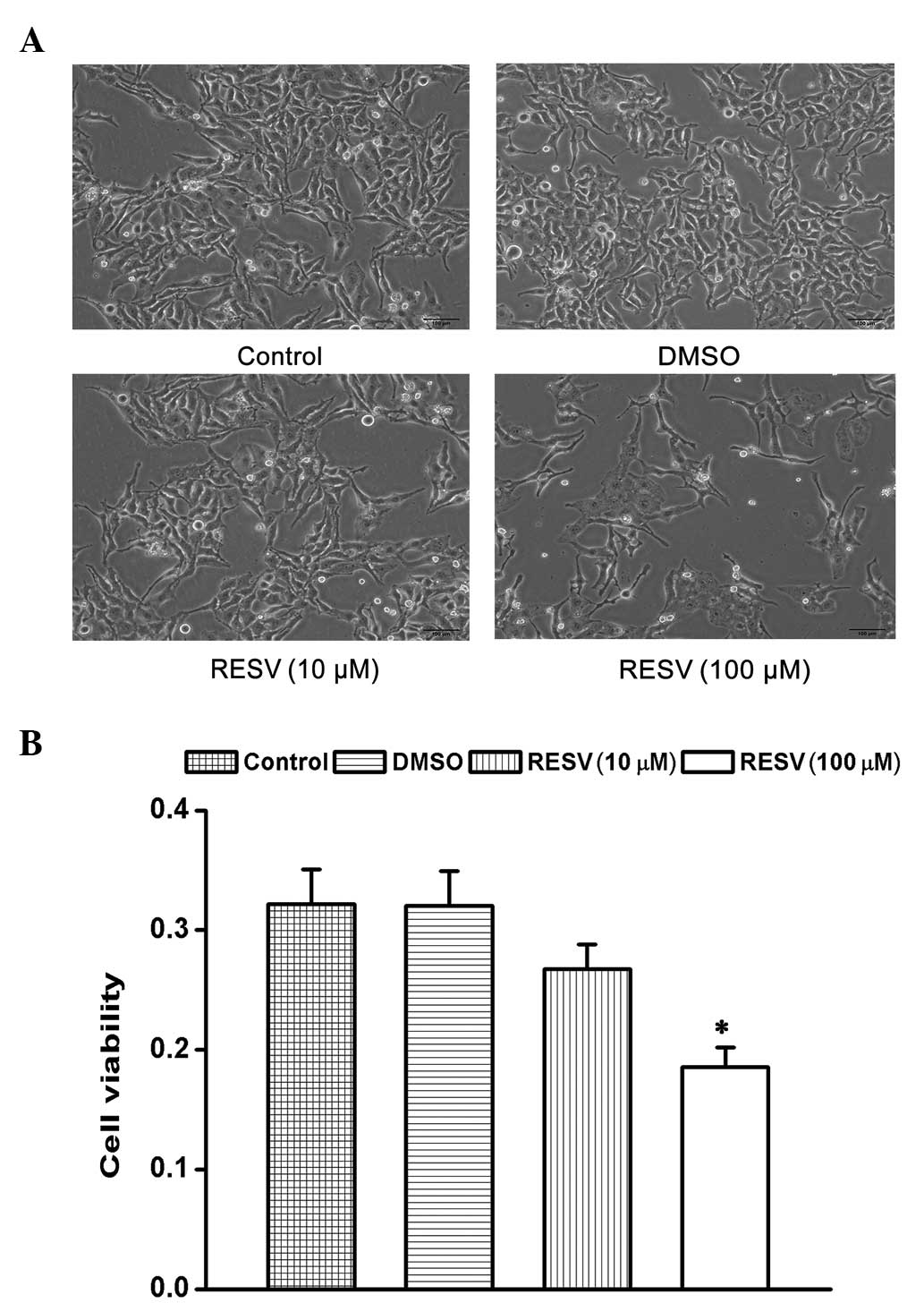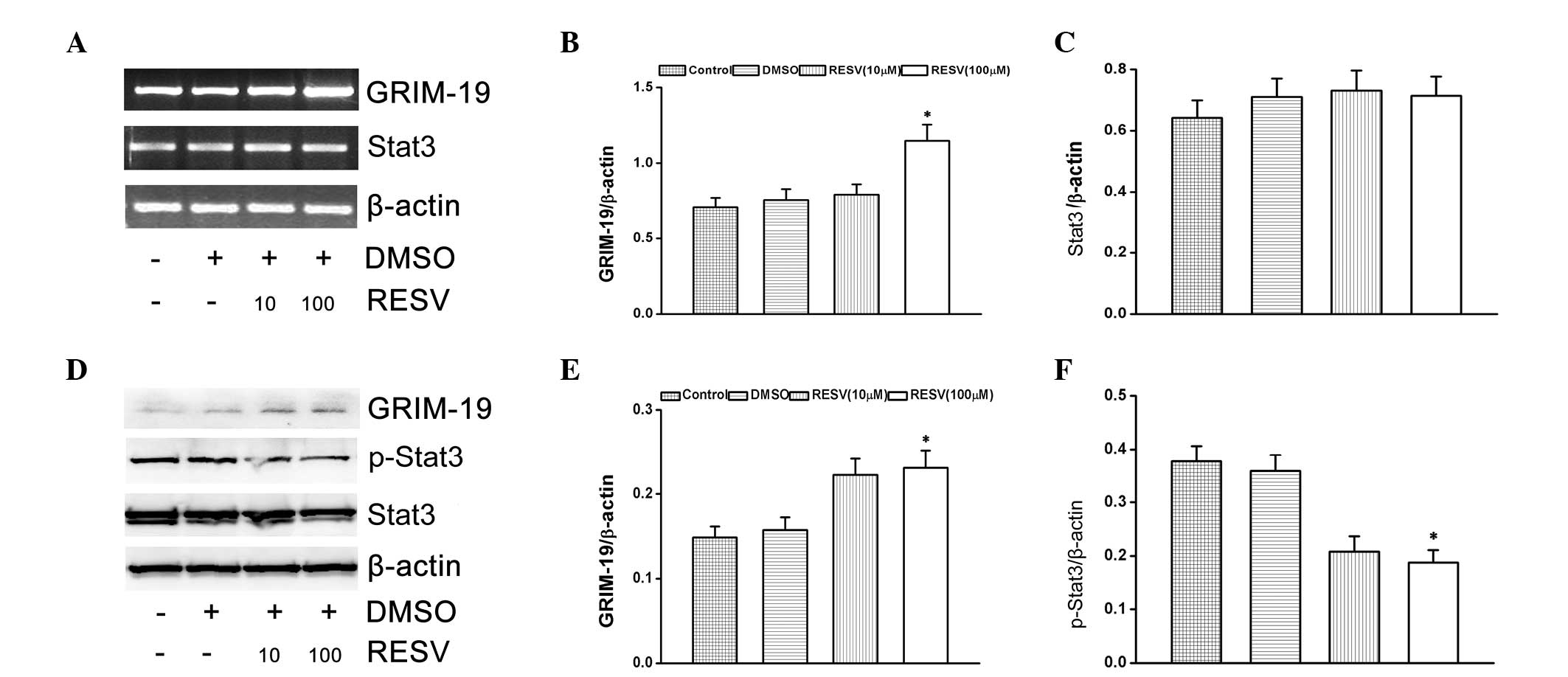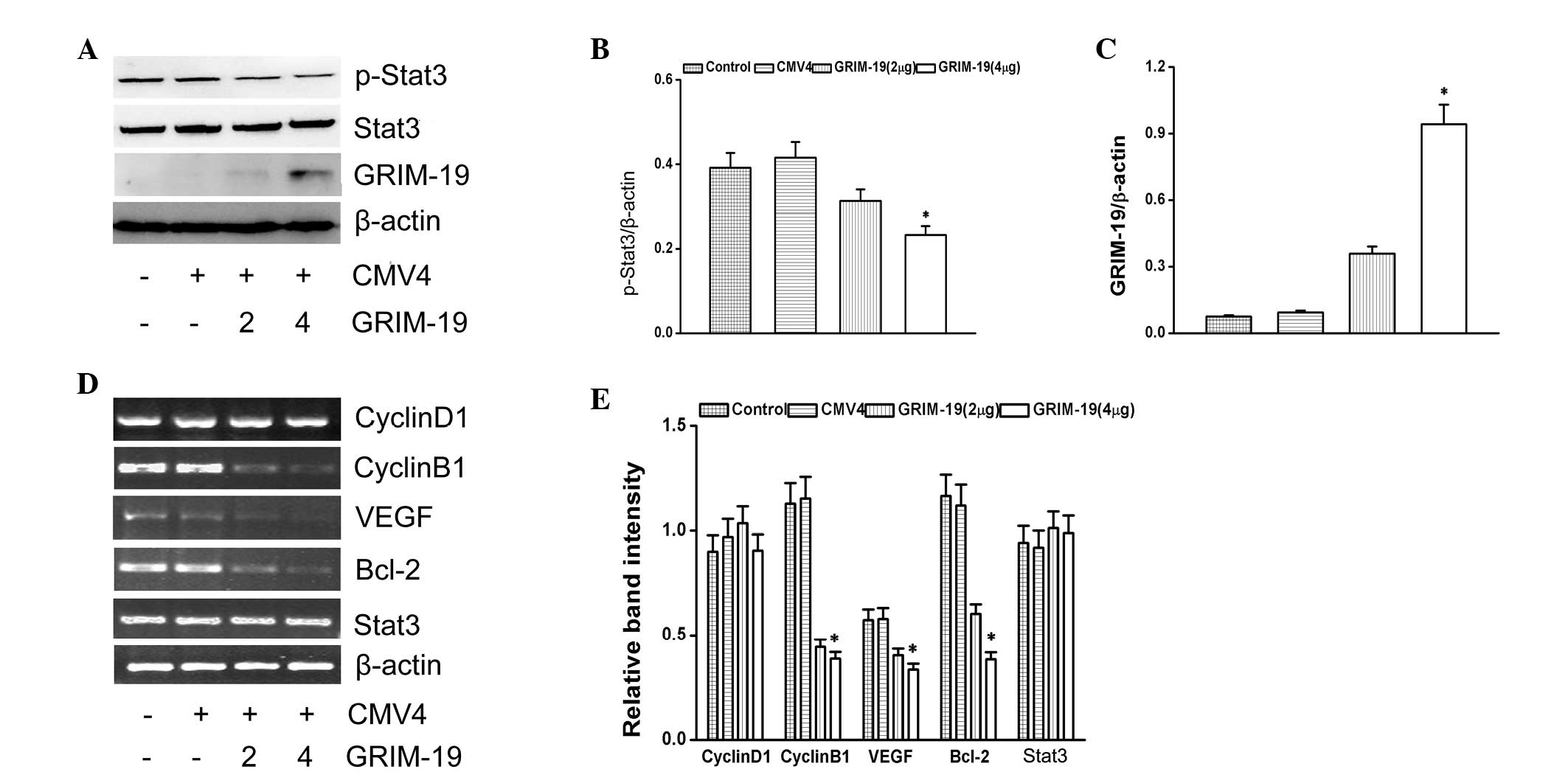|
1
|
Kopp P: Resveratrol, a phytoestrogen found
in red wine. A possible explanation for the conundrum of the
‘French paradox’? Eur J Endocrinol. 138:619–620. 1998. View Article : Google Scholar : PubMed/NCBI
|
|
2
|
Jang M, Cai L, Udeani GO, et al: Cancer
chemopreventive activity of resveratrol, a natural product derived
from grapes. Science. 275:218–220. 1997. View Article : Google Scholar : PubMed/NCBI
|
|
3
|
Mgbonyebi OP, Russo J, Russo IH, et al:
Antiproliferative effect of synthetic resveratrol on human breast
epithelial cells. Int J Oncol. 12:865–869. 1998.PubMed/NCBI
|
|
4
|
Elattar TM and Virji AS: The effect of red
wine and its components on growth and proliferation of human oral
squamous carcinoma cells. Anticancer Res. 19:5407–5414. 1999.
|
|
5
|
Srivastava RK, Unterman TG and Shankar S:
FOXO transcription factors and VEGF neutralizing antibody enhance
antiangiogenic effects of resveratrol. Mol Cell Biochem.
337:201–212. 2010. View Article : Google Scholar
|
|
6
|
Bromberg J and Darnell JE Jr: The role of
STATs in transcriptional control and their impact on cellular
function. Oncogene. 19:2468–2473. 2000. View Article : Google Scholar : PubMed/NCBI
|
|
7
|
Yu H and Jove R: The STATs of cancer - new
molecular targets come of age. Nat Rev Cancer. 4:97–105. 2004.
View Article : Google Scholar : PubMed/NCBI
|
|
8
|
Macias E, Rao D and Digiovanni J: Role of
stat3 in skin carcinogenesis: insights gained from relevant mouse
models. J Skin Cancer. 2013:6840502013. View Article : Google Scholar : PubMed/NCBI
|
|
9
|
Cho KH, Jeong KJ, Shin SC, et al: STAT3
mediates TGF-beta1-induced TWIST1 expression and prostate cancer
invasion. Cancer Lett. 336:167–173. 2013. View Article : Google Scholar : PubMed/NCBI
|
|
10
|
You W, Tang Q, Zhang C, et al: IL-26
promotes the proliferation and survival of human gastric cancer
cells by regulating the balance of STAT1 and STAT3 activation. PLoS
One. 8:e635882013. View Article : Google Scholar : PubMed/NCBI
|
|
11
|
Han Z, Feng J, Hong Z, et al: Silencing of
the STAT3 signaling pathway reverses the inherent and induced
chemoresistance of human ovarian cancer cells. Biochem Biophys Res
Commun. 435:188–194. 2013. View Article : Google Scholar : PubMed/NCBI
|
|
12
|
Yu W, Xiao H, Lin J and Li C: Discovery of
novel STAT3 small molecule inhibitors via in silico site-directed
fragment-based drug design. J Med Chem. 56:4402–4412. 2013.
View Article : Google Scholar : PubMed/NCBI
|
|
13
|
Okamoto T, Inozume T, Mitsui H, et al:
Overexpression of GRIM-19 in cancer cells suppresses STAT3-mediated
signal transduction and cancer growth. Mol Cancer Ther.
9:2333–2343. 2010. View Article : Google Scholar : PubMed/NCBI
|
|
14
|
Nallar SC, Kalakonda S, Lindner DJ, et al:
Tumor-derived mutations in the gene associated with retinoid
interferon-induced mortality (GRIM-19) disrupt its anti-signal
transducer and activator of transcription 3 (STAT3) activity and
promote oncogenesis. J Biol Chem. 288:7930–7941. 2013. View Article : Google Scholar : PubMed/NCBI
|
|
15
|
Bu X, Zhao C, Wang W and Zhang N: GRIM-19
inhibits the STAT3 signaling pathway and sensitizes gastric cancer
cells to radiation. Gene. 512:198–205. 2013. View Article : Google Scholar
|
|
16
|
Lufei C, Ma J, Huang G, et al: GRIM-19, a
death-regulatory gene product, suppresses Stat3 activity via
functional interaction. Embo J. 22:1325–1335. 2003. View Article : Google Scholar : PubMed/NCBI
|
|
17
|
Zhou T, Chao L, Rong G, et al:
Down-regulation of GRIM-19 is associated with STAT3 overexpression
in breast carcinomas. Hum Pathol. 44:1773–1779. 2013. View Article : Google Scholar : PubMed/NCBI
|
|
18
|
Nallar SC, Kalakonda S, Sun P, et al:
Identification of a structural motif in the tumor-suppressive
protein GRIM-19 required for its antitumor activity. Am J Pathol.
177:896–907. 2010. View Article : Google Scholar : PubMed/NCBI
|
|
19
|
Zhang Y, Hao H, Zhao S, et al:
Downregulation of GRIM-19 promotes growth and migration of human
glioma cells. Cancer Sci. 102:1991–1999. 2011. View Article : Google Scholar : PubMed/NCBI
|
|
20
|
Robertson CN, Roberson KM, Padilla GM, et
al: Induction of apoptosis by diethylstilbestrol in
hormone-insensitive prostate cancer cells. J Natl Cancer Inst.
88:908–917. 1996. View Article : Google Scholar : PubMed/NCBI
|
|
21
|
Wen S, Li H, Wu ML, et al: Inhibition of
NF-kappaB signaling commits resveratrol-treated medulloblastoma
cells to apoptosis without neuronal differentiation. J Neurooncol.
104:169–177. 2011. View Article : Google Scholar
|
|
22
|
Kotha A, Sekharam M, Cilenti L, et al:
Resveratrol inhibits Src and Stat3 signaling and induces the
apoptosis of malignant cells containing activated Stat3 protein.
Mol Cancer Ther. 5:621–629. 2006. View Article : Google Scholar : PubMed/NCBI
|
|
23
|
Capiralla H, Vingtdeux V, Zhao H, et al:
Resveratrol mitigates lipopolysaccharide- and Abeta-mediated
microglial inflammation by inhibiting the TLR4/NF-kappaB/STAT
signaling cascade. J Neurochem. 120:461–472. 2012. View Article : Google Scholar :
|
|
24
|
Scuto A, Kirschbaum M, Buettner R, et al:
SIRT1 activation enhances HDAC inhibition-mediated upregulation of
GADD45G by repressing the binding of NF-kappaB/STAT3 complex to its
promoter in malignant lymphoid cells. Cell Death Dis. 4:e6352013.
View Article : Google Scholar
|
|
25
|
Giraud AS, Menheniott TR and Judd LM:
Targeting STAT3 in gastric cancer. Expert Opin Ther Targets.
16:889–901. 2012. View Article : Google Scholar : PubMed/NCBI
|
|
26
|
Deng J, Liu Y, Lee H, et al: S1PR1-STAT3
signaling is crucial for myeloid cell colonization at future
metastatic sites. Cancer Cell. 21:642–654. 2012. View Article : Google Scholar : PubMed/NCBI
|
|
27
|
Tkach M, Coria L, Rosemblit C, et al:
Targeting Stat3 induces senescence in tumor cells and elicits
prophylactic and therapeutic immune responses against breast cancer
growth mediated by NK cells and CD4+ T cells. J Immunol.
189:1162–1172. 2012. View Article : Google Scholar : PubMed/NCBI
|
|
28
|
Sheth S, Jajoo S, Kaur T, et al:
Resveratrol reduces prostate cancer growth and metastasis by
inhibiting the Akt/MicroRNA-21 pathway. PLoS One. 7:e516552012.
View Article : Google Scholar : PubMed/NCBI
|
|
29
|
Wang H, Zhang H, Tang L, et al:
Resveratrol inhibits TGF-beta1-induced epithelial-to-mesenchymal
transition and suppresses lung cancer invasion and metastasis.
Toxicology. 303:139–146. 2013. View Article : Google Scholar
|
|
30
|
Aziz MH, Kumar R and Ahmad N: Cancer
chemoprevention by resveratrol: In vitro and in vivo studies and
the underlying mechanisms (Review). Int J Oncol. 23:17–28.
2003.PubMed/NCBI
|
|
31
|
Jeong WS, Kim IW, Hu R and Kong AN:
Modulation of AP-1 by natural chemopreventive compounds in human
colon HT-29 cancer cell line. Pharm Res. 21:649–660. 2004.
View Article : Google Scholar : PubMed/NCBI
|
|
32
|
Wu Y and Liu F: Targeting mTOR: Evaluating
the therapeutic potential of resveratrol for cancer treatment.
Anticancer Agents Med Chem. 13:1032–1038. 2013. View Article : Google Scholar : PubMed/NCBI
|
|
33
|
Chung MY, Lim TG and Lee KW: Molecular
mechanisms of chemopreventive phytochemicals against
gastroenterological cancer development. World J Gastroenterol.
19:984–993. 2013. View Article : Google Scholar : PubMed/NCBI
|
|
34
|
Kong AN, Yu R, Hebbar V, et al: Signal
transduction events elicited by cancer prevention compounds. Mutat
Res. 480–481:231–241. 2001. View Article : Google Scholar
|













